Butterfly Anatomy
Part of the Davis Family Butterfly Vivarium exhibition.
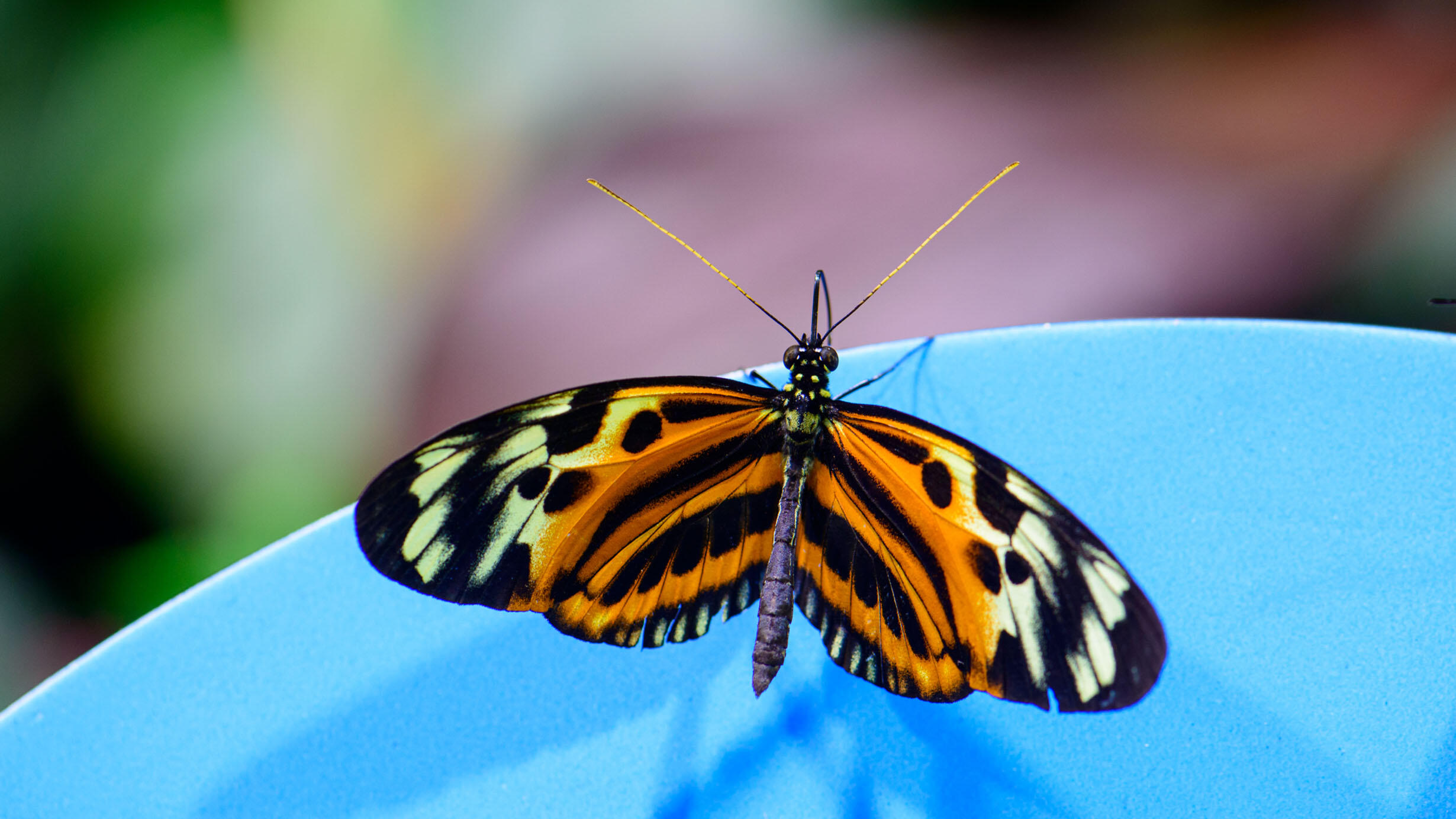 Alvaro Keding/© AMNH
Alvaro Keding/© AMNH Colorful Wings
The colors and patterns on butterfly wings come from tiny scales. Each scale can contain granules of pigment or have a texture that produces a color or effect. Together, these scales add up like pixels in an image.
Each scale attaches individually, allowing them to break off and help butterflies escape from spider webs.
Scales are a defining feature of butterflies and moths, which is why the scientific name of their order, Lepidoptera, comes from lepidos and ptera, the Greek words for "scale" and "wing."
Amazing Senses
Like other insects, butterflies have compound eyes made from hundreds of light-sensitive units called facets. Each segment is like a little eye with its own lens and light sensor. These eyes can detect motion and color, and even see ultraviolet light, which is invisible to humans.
Butterflies have amazing senses beyond just sight. They have the same senses as us, but use different organs.
They smell with their antennae and taste with cells on their feet and proboscis (pro-BOSS-iss)–the long, straw-like appendage they use to suck up nectar from flowers. When not eating, butterflies keep their proboscis coiled up.
Alvaro Keding/© AMNH
Other special sensors detect specific chemicals, such as carbon dioxide.
Antennae detect smells with thousands of hair-like receptors.
Butterfly or Moth?
Ryan Hagerty/WikiMedia Commons
The Davis Family Butterfly Vivarium includes both butterflies and moths, which are both Lepidoptera. But they have a few distinguishing features.
Butterflies have a bulb on their antennae. While butterflies all have the same kind of antennae, moth antennae feature a variety of shapes.
Butterflies don't wrap their pupa in a silken cocoon like most moths. The butterfly pupa form a cuticle, also called a chrysalis, that encloses its head and body. Many moth species wrap themselves in a silk covering, called a cocoon.
There are over 140,000 species of moths. Most moths fly at night and have subtle patterns. But they also include colorful types, huge and small species, and ones active at day.
There is actually no biological definition of a moth: the word "moth" is just the common, non-scientific term for all Lepidoptera that are not butterflies.
Defensive Adaptations
Butterflies don't bite or sting, but some have toxins in their bodies. Many toxic butterflies are brightly colored–a warning to predators. An animal that eats one remembers the experience and avoids butterflies colored in the same way
In contrast to the bright butterflies, some evade predators by blending into the background. With subtle colors and special wing shapes, they imitate dried leaves, bark, or lichen.
Quartl/WikiMedia Commons
When its wings are folded, the Kallima butterfly looks almost exactly like a dead leaf, with a wing pattern that even has an imitation stem, veins, and blotches.
Mimic to Survive
You're not seeing double–these are two different species. One of them is poisonous (the crimson rose, right), but the other (the common mormon) is a copycat that fools predators into leaving it alone by looking nearly identical to its distasteful model. When a non-poisonous animal looks like a poisonous one, scientists call it Batesian mimicry.
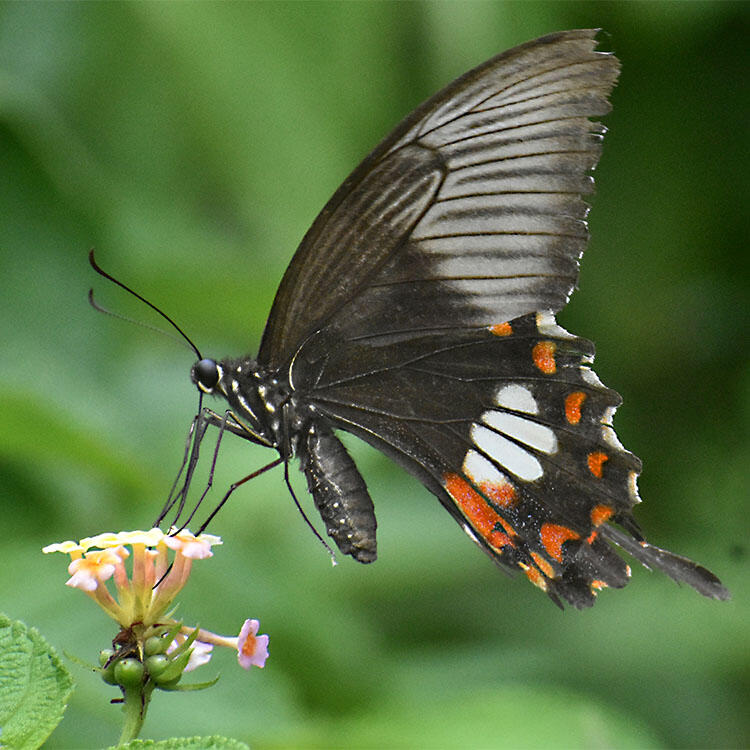 The common mormon butterfly
The common mormon butterflyTapan Pramanik/WikiMedia Commons
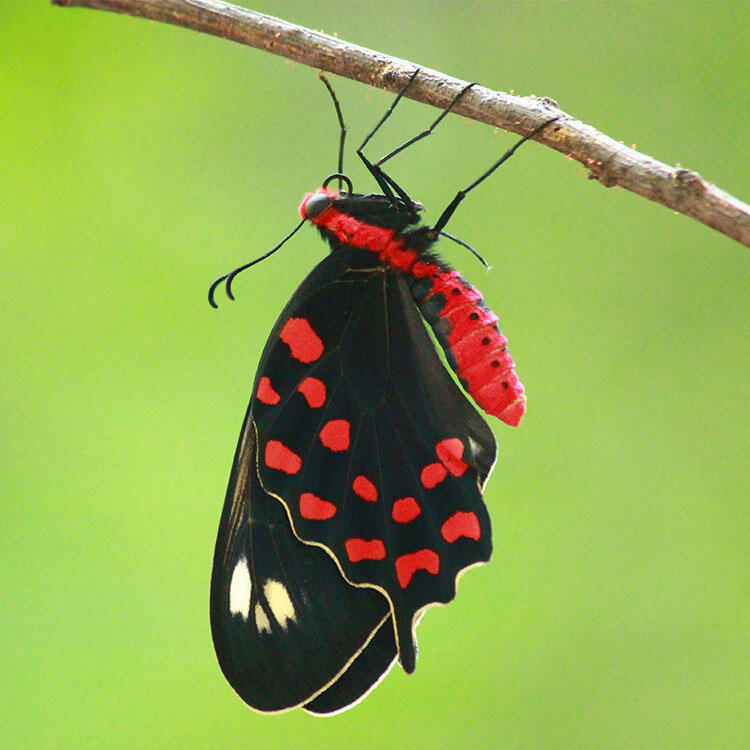 The crimson rose butterfly
The crimson rose butterflyBrijesh Pookkottur/WikiMedia Commons
Two poisonous species, like monarch and the viceroy butterflies, can evolve to look like each other, amplifying the message "don't eat me!" to predators. When toxic animals evolve the same appearance, scientists call it Müllerian mimicry.
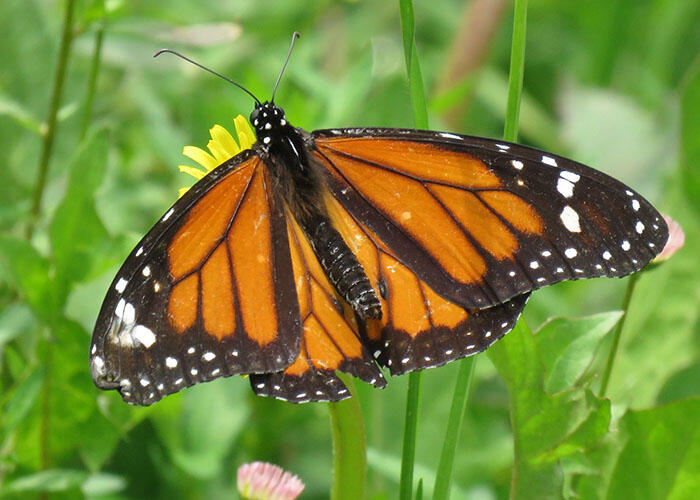 The monarch butterfly
The monarch butterflyJuan Carlos Caicedo Hernandez/WikiMedia Commons
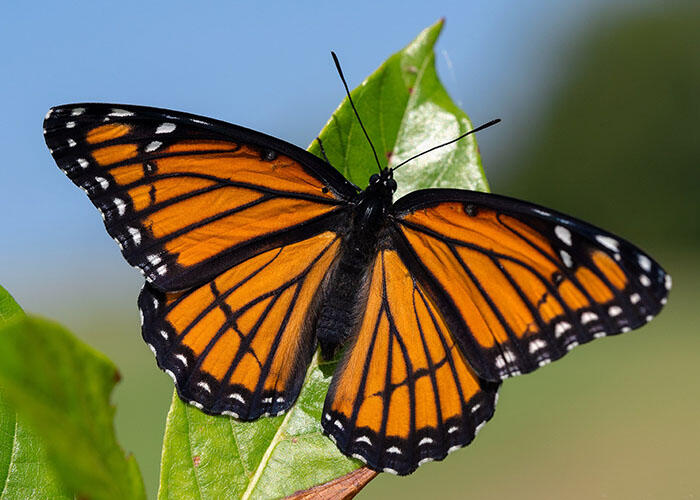 This toxic viceroy is bright orange, a Müllerian mimic of the also toxic monarch.
This toxic viceroy is bright orange, a Müllerian mimic of the also toxic monarch.Thomas Shahan 3/WikiMedia Commons